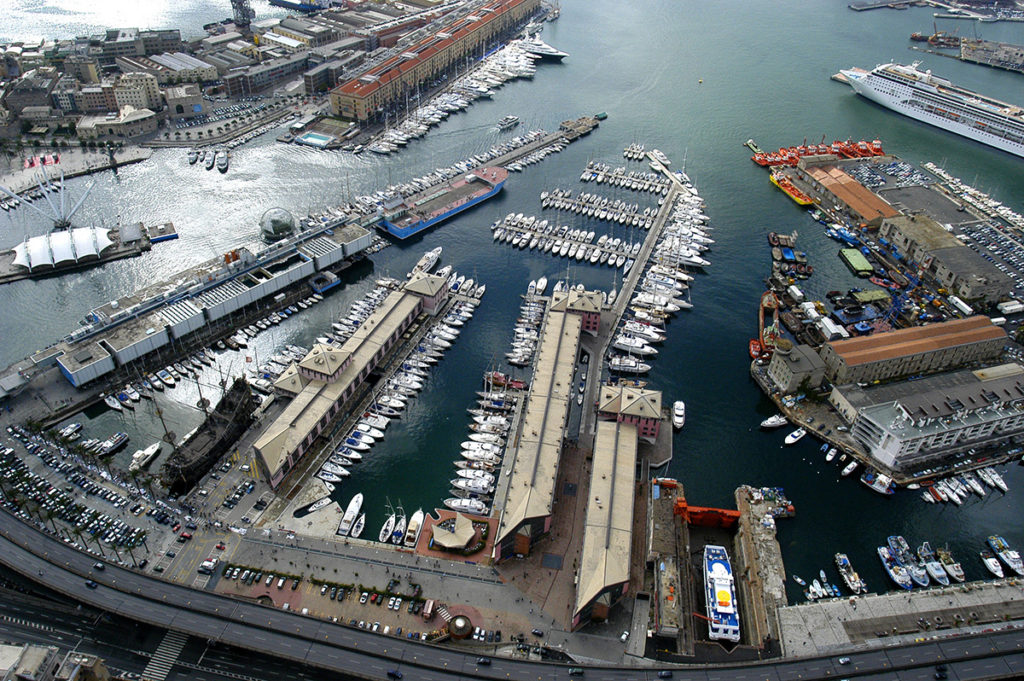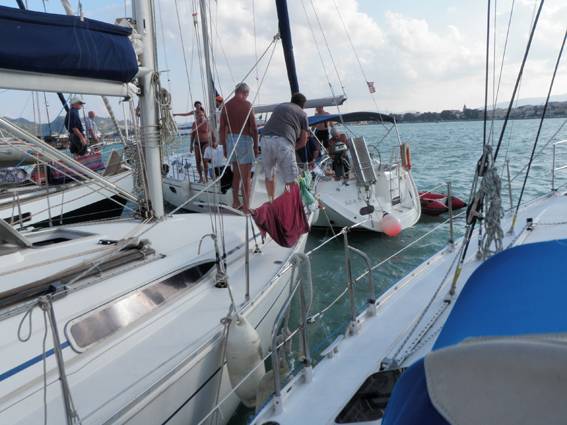Those engaged in the mooring maneuver often see the boat already at the downwind dock as an excellent support point; conversely, the owner or skipper of the already moored boat experiences moments of great trepidation while waiting for the newcomer’s maneuver to conclude quickly and without damage to the vessels.
The boat next to ours truly represents a great help. As a reference point, as support to correct a trajectory, as a point to hook onto. However, if you choose to use a support boat, it’s important to maintain proper behavior, eliminating risks of causing damage to the boat you’re asking help from, and acting safely for ourselves and our crew.
Using a boat hook, pulling or pushing by leveraging the nearby boat is possible, but it must be done in the right way. Let’s start by establishing three fundamental points. The first concerns the pushing and pulling forces we exert on the boat alongside. They must be applied to suitable points that are structurally capable of bearing the strain.

The third concerns the boat hook. We must grip it keeping our body sideways to avoid recoil.
It’s also important to remember never to approach an already moored boat and dock without having the right number of fenders to protect both us and the other boat, keeping at least one spare fender in hand, ready to use if needed.
That said, if we want to use the boat hook to approach or push away from a boat, we can do so by hooking onto a cleat, or a shroud or gunwale. Never use a lifeline or stanchion as a pulling point, as they are not structurally suitable to withstand this type of stress.
Even when pushing with the boat hook, you can do so using the base of the wooden or plastic pole and always applying pressure on the gunwale.
Sometimes incorrect behaviors are observed even when using hands, such as when force is applied to the lifelines of the adjacent boat. If we want to get closer, we can pull by grabbing the shroud of the boat next to ours, while if we want to move away, we can push with one foot on the gunwale but being careful to keep the other leg outside our lifelines. Otherwise, there’s a risk that if the two vessels move apart for any reason, we could find ourselves dangerously splitting our legs.
Often people are seen pushing the boat away while sitting on the side deck with both feet resting on the gunwale of the neighboring boat. This can be done but with great attention to the mooring, which must already be completed. Otherwise, there’s a risk of dangerous recoil or slipping forward under the lifelines.
Finally, it’s essential to remember never to put hands between one hull and another, as the risk of serious fractures is very high. Regarding the safety of the vessel you’ve chosen to use as support, it’s important to avoid using the boat hook on weak points such as lifelines and stanchions, and to avoid exerting pressure on the deck and side decks.



